I have 60 watt LED strip I want to control with an Arduino (the Genuino Mega 2560 actually). I found this tutorial which shows you how to do it for a white LED strip, but I am not sure whether I can just connect the same circuit three times or whether there is a better way. Also, the web store I wanted to buy components from said some parts, the BC639 in particular, are "outdated", suggesting the BC63916 instead.
Schematic of my (probably very bad) attempt:

As you may notice I am quite inexperienced and I doubt that my "just slam everything together" approach above will work. My questions:
- Is it even smart to use the totem-pole driver recommended in the article or should I stick to a more simple solution?
- If so, how can I connect three of these circuits together for my RGB strip (or how can I adjust my attempt)?
- Finally, are the components and resistor values named in the article sufficient?
"For the transistors a BC639 NPN and a BC640 PNP do the job. R is 3.3Ω. RB is 22Ω. RGATE is 4.7Ω. C is a big 1000μF electrolytic."
I have one last question, but it is not as important. I could buy a 12V power supply, but the power supply of my PC (which I intend to control the Arduino with) can also deliver this. Is this a good idea or will I destroy my PSU?

